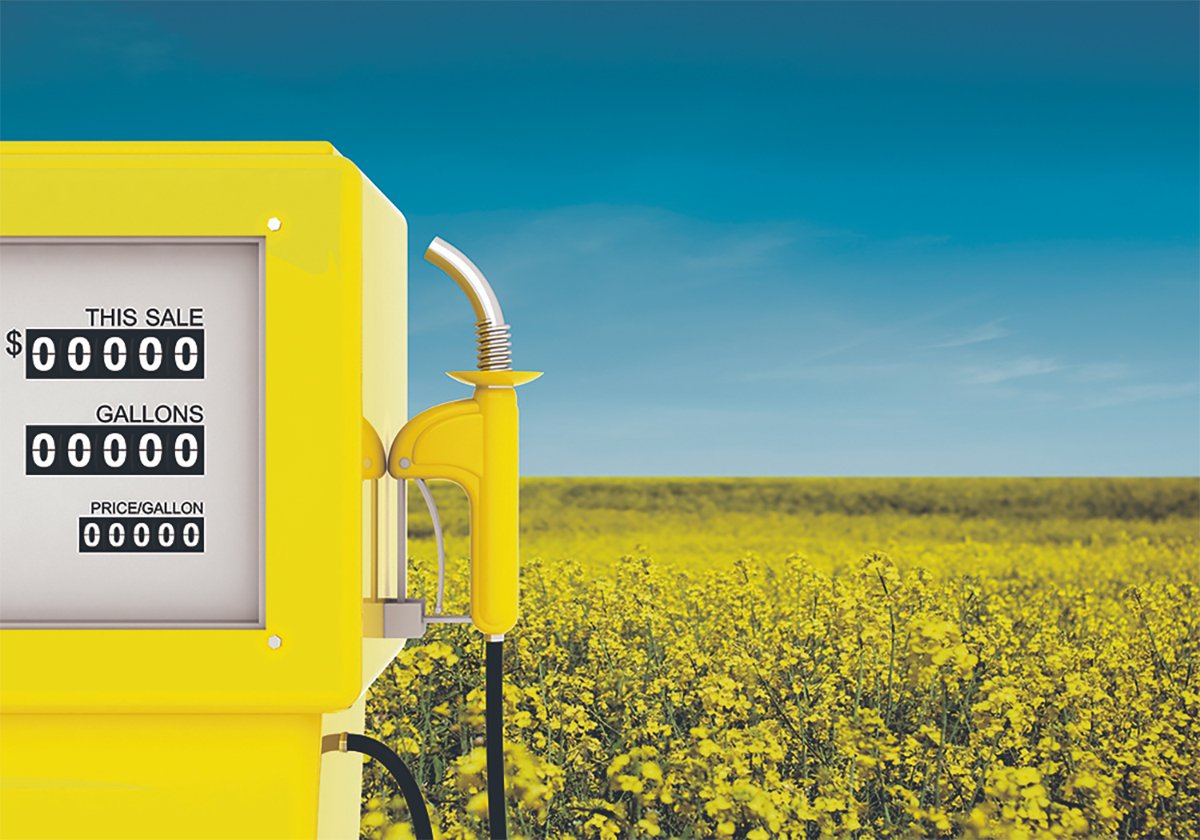Volatile flax prices are partly to blame for the crop’s low profile on the Prairies, says the vice-chair of Flax Canada 2015.
During an interview at the unveiling of the flax industry’s new growth strategy on April 13, Eric Fridfinnson said growers have had opportunities to sell at high prices but also opportunities to lose their shirts.
“We’ve seen some pretty wide swings in flax pricing,” he said.
“It’s been $4 (per bushel) or $14. Take your pick.”
Fridfinnson said flax has been losing out to other oilseeds and grains, but booming new market interest means it can crawl back from the shadows to its rightful place in the prairie sun. Whether it’s the surge in health food products containing flax fibre and oil or the growing high-end linoleum market, flax is becoming more popular with buyers.
Read Also

Biofuel sector happy with federal budget
Advanced Biofuels Canada says new Biofuel Production Incentive is a lifeline until CFR amendments are in place.
However, Fridfinnson said that buyers will need to put more money in farmers’ pockets or they won’t bother growing it.
Industry and government have come up with a plan to build production and demand.
“We really need to triple the acreage or at least double it,” he said.
“We really think we need five million acres in the longer term to have the momentum to be a viable crop.”
The new strategy will spend $4 million on commercializing flax products for the market, with the money coming from the federal government, the provincial governments of Alberta, Manitoba and Saskatchewan, the Flax Council of Canada and the Saskatchewan Flax Development Commission.
Flax Canada 2015 hopes that the money will get it closer to its lofty flax value goal of $1.5 billion annually, up from today’s $300 million value.
Fridfinnson said the demand side of the equation is already bearing fruit.
“We’re hoping with the increased size of the market and a more widely dispersed market that we’re going to see fewer of those radical drops in price and that it will encourage people to grow some flax every year,” he said.
The recent biofuel boom hasn’t helped the crop’s fortunes. Wheat and canola prices have soared, and U.S. farmers are focused on soybeans and corn rather than smaller crops such as flax.
However, Fridfinnson said he believes his organization’s attempts to co-ordinate the three prairie flax breeding teams will keep flax yields competitive with canola improvements.
He also thinks the industry’s development of specialty markets will complement the boom in the big crops.
“When we see our competitors like the United States focusing so strongly on soybeans and corn, I think it’s a wonderful opportunity for Western Canada’s small crops to reach an unprecedented potential and an untapped market.”
However, he acknowledged that farmers need to be shown the money before they begin committing yearly acreages to flax.
“There’s no doubt that if flax is going to be an appealing crop to farmers, it has to compete with the other crops that are out there,” Fridfinnson said.
“We do believe that we’ll be able to come up with some significant improvements, but it’s a real challenge for the smaller crops. Even wheat and canola are sometimes considered small crops in the U.S.”















